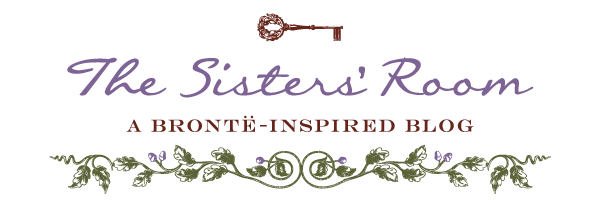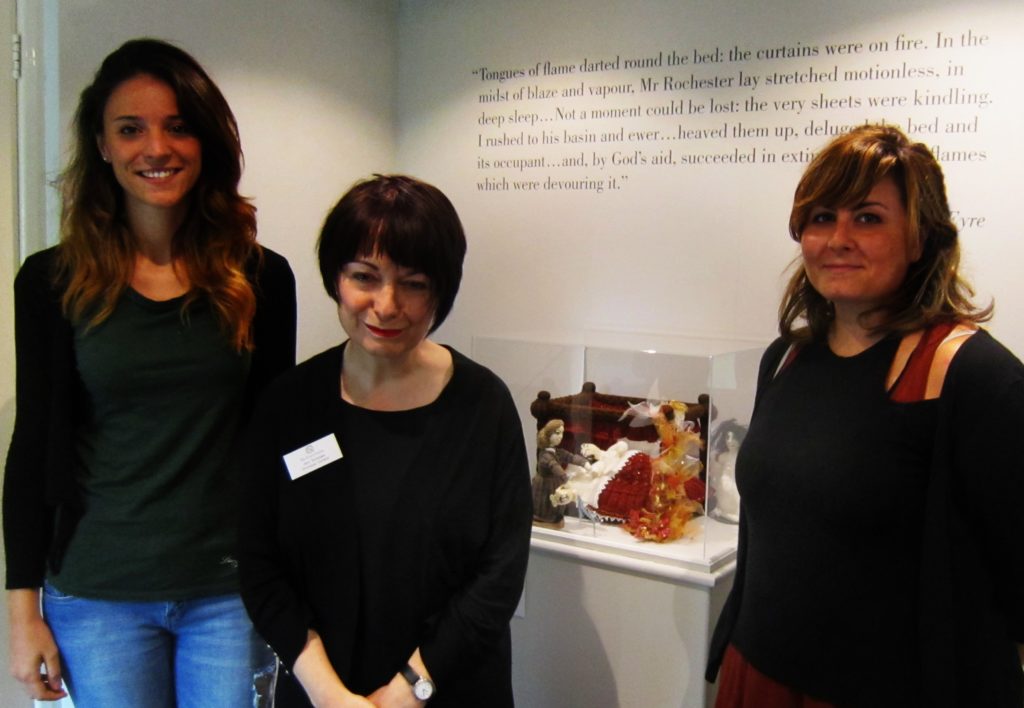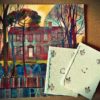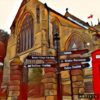As always, everytime we get back to Haworth, the first place we want to see is the Brontë Parsonage Museum. Last August, during our visit, we had the chance to interview in person the Principal Curator of the Museum, Ann Dinsdale. She really is a charming person, so passionate, knowledgeable, and kind. Meet her through her words, read the interview she gave us for our readers. You will want to meet her in person too, when you’re done!

- Hello Ann, when did you first encounter the Brontës, and who’s your favourite member of the family?
I first encountered the Brontës many years ago, in the 1960s, when I was a school child and came on a school visit to the Parsonage- up until that point I had never heard of the Brontës. So I came to the museum and we had a talk, and I was just fascinated… I’m one of three sisters, and I have a brother as well, so initially I found that quite interesting.. and I liked the idea of writing as well, so I was very interested. Initially, obviously, it was their lives- I was too young to read the novels- and I think that’s how I encountered the Brontës. I can’t honestly say I have a favourite Brontë. I admire them all for different reasons: Anne because of her intellect, and her courage; Charlotte, again, for her intellect and courage but, I just love Jane Eyre… I think it’s one of my favourite all-time books. Even if, well, also Wuthering Heights is another favourite- I think I cannot make my mind upon which of the two novels I prefer, when I’m reading Jane Eyre is Jane Eyre, when I’m reading Wuthering Heights is Wuthering Heights. I think certainly Wuthering Heights is the most extraordinary book I’ve ever read. I think it’s a life-changing book, and we know so little about Emily Brontë that we can’t help being fascinated and intrigued by her (she was so strange, she had such a singular character). So I admire all the Brontës , I can’t say I have got a favourite.
- How long have you been working at the Parsonage Museum, and what do you like the most about your job?
I’ve been here probably longer than the Brontës now! I started working here in 1989 so, I’ve been here for a long time. My job has changed over that period and nowadays I’m the Principal Curator and I’m in charge of the collection – both the library research collection and the actual museum objects. I’m assisted by my colleague Sarah Laycock, who’s the curator here; so we work together on the exhibitions which is something I really enjoy: doing the research and writing the interpretation for exhibitions and deciding what objects we’re going to use, to display. I also like the research – I think that’s probably my favourite part of the job actually- whether it’s researching for exhibitions or carving out research for our enquiry service. You know, we get people who email us, phone us, write to us and they want information on a particular topic and sometimes is a really interesting topic, and I quite enjoy that business of trying to track down information for them because of course it adds to my knowledge as well. So yes it’s definitely the research element, but also you get the privilege of meeting quite a lot of interesting people who work here so that’s always good.
- As an author and a Brontë expert you must have visited many Brontë places- which one is your favourite and why?
Well I’d have to say the Parsonage, wouldn’t I? There are lots of places I visited in connection with the Brontës – In fact, I think the only places I’ve not been to are those in Ireland. I particularly love the Red House and Hoakwell Hall- the Red House, of course, was the home of Charlotte’s school friend Mary Taylor which is now a museum but for how much longer? It’s on the serious thread and it’s such a tragedy, if it becomes a private building. That’s definitely one of my favourite places.
- Among all the poems written by the Brontës, which one is your favourite?
Emily is definitely my favourite poet amongst the Brontës and I like quite a lot of her poems. I think my favourite is one of the short, really simple, poems she wrote called High Waving Heather which is just so evocative of the moors in Haworth, you know. But then I like some of the quite gloomy poems, the one about wild Decembers is a particular favourite, and I love the fact there’s so much repetition of the language in that which it probably would never get away with a modern editor, but it really kind of reinforces that passing of time… so definitely poems by Emily.





